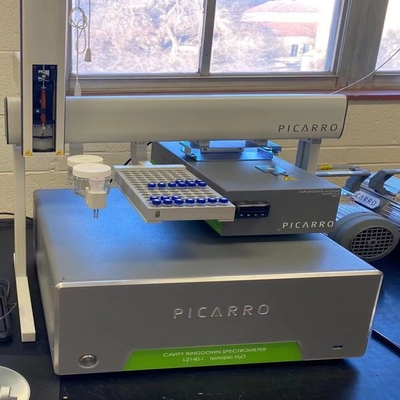
Xinying Ling
Organization: Texas Tech University
Years Using Picarro: 4 Years
Analyzer(s) Used: L2140-i
Studying the Water Movement Processes in the Soil-Plant-Atmosphere Continuum (SPAC) using Stable Isotopes and Numerical Simulations
About My Research
I am studying the water movement processes in the Soil-Plant-Atmosphere Continuum (SPAC) in West Texas, USA, using stable isotopes and numerical simulations. This study can provide us with a qualification and quantification understanding of the water movement in the vadose zone of semi-arid regions, and help us know more about plant water usage. Those accurate estimations and understanding would help to provide scientific significance in the vadose-zone hydrology study in the semi-arid regions, which is of importance for developing sustainable environments and resources in Southern High Plains.
Furthermore, understanding the water budget in the natural environment can benefit society ecologically and economically. It will help with scientific water management (groundwater use, rainwater, soil water, irrigation, and plant water uptake) and water policies, intellectual agricultural planting and irrigation, groundwater recharge, groundwater pollution control, soil pollution and treatment, alternative water resources development, and food safety.
How Picarro Analyzers Helped
Stable isotopes are the tracers for studying the water movement in the Soil-Plant-Atmosphere Continuum (SPAC). δ2H (1H2HO/1H2O) and δ18O (H218O/H216O) values have been widely used in tracking water transport, because distinct isotope compositions can indicate various sources and physical processes of phase transitions and transport. The slope and d-excess (d-excess=δ2H – 8δ18O) of LMWL have been widely used in isotope hydrology as an indicator of evaporation intensity. However, the slope and d-excess can also be influenced by the temperatures of condensation in the atmosphere and evaporation of water from surface waters and within the vadose zone. Recently, a new tracer, 17O-excess (Δ’17O), has been introduced in isotope hydrology. One of the advantages of Δ’17O compared with the d-excess is its independence on temperature. The analysis of evaporation loss by 17O-excess in this study will be a pioneering application of the triple-oxygen system in unsaturated water movement.
Picarro L2140-i can accurately analyze not only δ2H and δ18O, but also δ17O and 17O-excess, which brings the water movement and hydological processes study into a new milestone. Furthermore, the MCM module can conbusting the organics of plants and soil water, which makes it possible to accurately dealing with those samples without the influence of interference. Our picarro is also used in situ and lab atmospheric vapor analyzing, which is a quite convenient way to continuously measure the vapor isotopes, and telling us more information of the soil-plant-atmosphere water transports.
